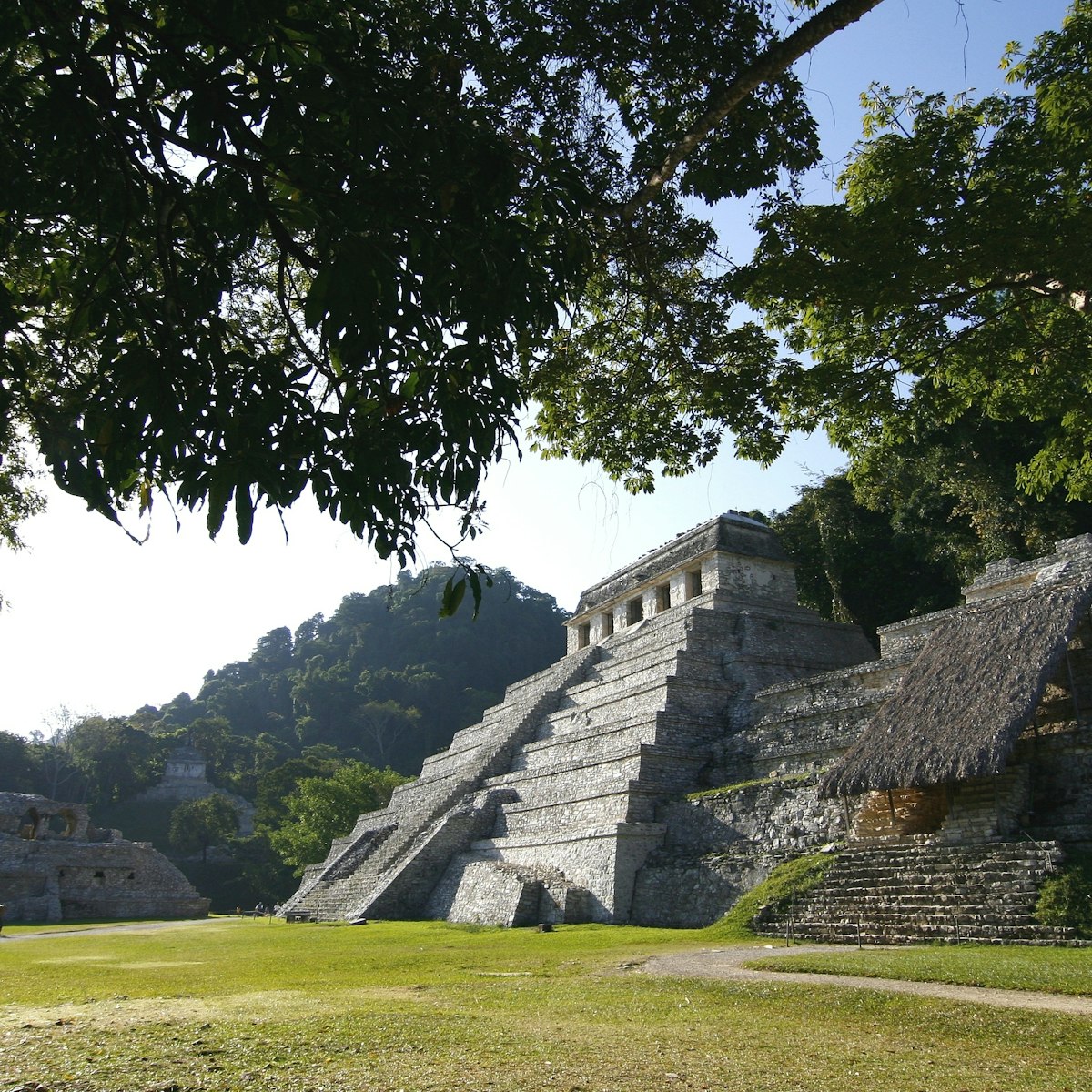Diagonally opposite the Templo de las Inscripciones is El Palacio, a large structure divided into four main courtyards, with a maze of corridors and rooms. Built and modified piecemeal over 400 years from the 5th century on, it was probably the residence of Palenque’s rulers.
Its tower, built in the 8th century by Ahkal Mo’ Nahb’ III and restored in 1955, has remnants of fine stucco reliefs on the walls, but you’re not allowed to climb up inside it. Archaeologists believe the tower was constructed so that Maya royalty and priests could observe the sun falling directly into the Templo de las Inscripciones during the winter solstice.
The northeastern courtyard, the Patio de los Cautivos (Patio of the Captives), contains a collection of relief sculptures that seem disproportionately large for their setting; the theory is that they represent conquered rulers and were brought from elsewhere.
In the southern part of the complex, the extensive subterranean bathrooms included six toilets and a couple of sweat baths.
In April 2018, a stucco mask thought to represent Pakal, along with ceramic figurines and pots, carved bones and other ancient artifacts, were discovered in El Palacio's House E.



